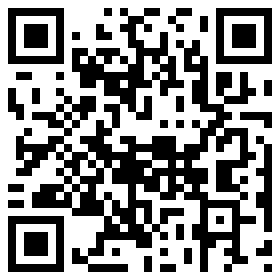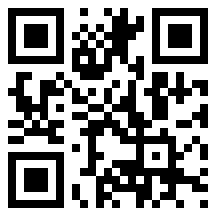Webheads http://webheads.info has just finished its second almost-annual, universally global, completely free, online conference. http://wiaoc.org. I say 'just' but the conference, which we also term a 'convergence' ended ten days ago. And I'm just now finding time to blog it.
It's not that I'm lazy or spaced out, but the convergence took all spare time from me for many weeks leading up to it, and when it ended I had desperately to attend to odds and ends I'd been holding at bay, like spending time with a neglected family and creating exams and giving and marking them plus a backlog of student assignments, and finalizing grade reports (which I just now finished; hence my return to posting here).
And finally I'm looking forward to having time for some reflection. I'm at the stage where suddenly a halcion summer has appeared as a gently spreading plateau at the end of a long uphill struggle, and I'm staring ahead at three months of being able to spend time on my own projects for a change.
I have some interesting projects in the works. I just emerged from a planning meeting at my workplace and discovered that it is being assumed that my role in upcoming development in courses I teach will be to implement a web 2.0 multiliteracies, blogging, social networking component in a syllabus that focuses heavily on transiting from Office 2003 to 2007 (should I introduce Open Office? that would be a thrust too far I'm afraid). I had blogged my plans for this curriculum component much earlier here: http://advanceducation.blogspot.com/2007/02/multiliteracies-and-curriculum.html but it has only now been confirmed to me that this is what I'll be working on next term.
I'm elated at that because it fits in with courses I'm giving in Spain this summer, and perhaps in Sudan in August (see http://www.vancestevens.com/papers), and I've been doing courses and workshops lately in web 2.0 and in particular an interesting project on writingmatrix which I just posted on in a self access learning list.
The question on the self-access list was how to keep students learning English over the summer, in particular how to encourage them to engage in "conversation/interaction of meaning/substance"
I suggested for "written conversation/interaction of meaning/substance -- Keep blogs?
"The teacher could promise to comment on them from time to time during the summer. The teacher could manage this task by using bloglines, http://www.bloglines.com.
"To learn how to start blogs students and teachers can use this tutorial:
http://www.homestead.com/prosites-vstevens/files/efi/blogger_tutorial.htm
"But students could seek out students from other countries and have some fun making new friends this summer by joining in the writingmatrix project. To do this your students simply tag their summer fun postings writingmatrix. Then they can use http://www.technorati.com/ (search on tags) to find other blog posts with the writingmatrix tag. When they find another blog they like of someone else in the writingmatrix project they simply leave a comment and perhaps invite that person to view their blog."
I further noted that "at http://wiaoc.org/ project members organized a presentation entitled Writingmatrix: CONNECTing students with blogs, tags, and social networking, http://writingmatrix.wikispaces.com/. The other teachers are Nelba Quintana and Rita Zeinstejer (from Argentina), Doris Molero (from Venezuela), and Sasha Sirk (Slovenia).
I put my slides explaining the project online here http://www.slideshare.net/vances/vance-writingmatrix-wiaoc2007/ and the other contributions are posted at http://webheadsinaction.org/node/174 .
A recording of the presentation at WiAOC can be found here:
http://streamarchives.net/node/48
"This is an attempt to utilize the social networking aspect of blogs (via the simple means of tagging posts in such a way that identifies each posting as being that of another student in the project) to enable students to make friends through blogging. If it works for you or your students I'd appreciate having your feedback."
Then to check on the project I went to Technorati and did a search on writingmatrix: http://www.technorati.com/posts/tag/writingmatrix
I was looking to see what students had posted but I came upon a blog post that mentioned writingmatrix but was tagged wiaoc 2007: http://maryhillis.blogspot.com/2007/05/wiaoc-2007.html. Mary Hillis had visited the convergence but found she really liked our presentation, the one mentioned above, and another one on blogging by Carla Arena, Erika Cruvinel, and Ronaldo Lima. It is gratifying to see that aggregation based on tagging is working and is indeed putting like-minded students and teachers in touch with one another.
I left a comment of course.
And if Mary stops by here, "Hi Mary!"
Someone responded to my list posting, asking "How do you tag?"
Here is my response:
What are known as TAGS in social networking might be called something else in various blogs and wikis. For example, in Blogger they are called LABELS in English and Etiquetas in Spanish Blogspot blogs, and probably something else in German. There’s a good article on Tagging at http://en.wikipedia.org/wiki/Tags. This explains the concept but doesn’t tell you how to do it.
I’ve also seen tags called ‘categories’
Technorati focuses on blogs and analyses what’s out there according to their tags (among other features).
We have a project where we try to get kids late teens to tag (or ‘label) their blog posts writingmatrix . To find the post I visit
http://www.technorati.com/posts/tag/writingmatrix
and there, just grabbing one at random, http://leonardobravo726.blogspot.com/2007/05/welcome-to-my-blog.html, I find it’s one of Doris’s students from Maracaibo. Doris works at URBE. This students tagged his blog posting efl, introduction, urbe, and writingmatrix. I found it by requesting tags for writingmatrix. If you searched all blog posts tagged efl you’d probably turn up thousands, but if you were looking for URBE for example, you’d find fewer, and some of these would be tagged writingmatrix as well.
I just tried http://www.technorati.com/posts/tag/writingmatrix+AND+urbe and got 4 hits but I’m sure there are more. We still haven’t learned how all this really works. We need teachers in this mix to help us figure it out.
Still playing around, I tried http://www.technorati.com/posts/tag/writingmatrix+urbe and got 29 hits, so I think this is the correct syntax.
I've tagged this post in a number of ways. You can find my tags below where it says 'labels for this post.' You might be able to find my post (this one) with a technorati search on writingmatrix but I also used wiaoc2007 and vance among many other tags.
I just tried http://www.technorati.com/posts/tag/writingmatrix+AND+vance and got 5 hits, but none of them what I was looking for (this post, at least not yet ;-) (and same results for http://www.technorati.com/posts/tag/writingmatrix+vance). There were surprises.
One of the teachers in the project is starting a tag project on serendipity, and serendipity is exactly where this leads. And if you think this is fun, wait till we get on to del.icio.us. That’s where the kids will really get carried away (find out who’s reading their posts, who’s tagging them, what they’re tagging them ;-)
I just tried http://www.technorati.com/posts/tag/serendipity
And got 32,000 hits, starting at 15 min ago. This is a case where I would recommend Rita try TWO tags serendipity+writingmatrix to narrow down the field. Right now there are no hits in that combination, which means it would probably work VERY well if she has her kids do it the multiple-tag way.
You can also tag flickr photos, google maps (I think, or if not there must be 3rd party software that allows it), and at least half the stuff if not 99% of what you can put up on the read-write web 2.0. So students can take pics during their hols and post them online and tag them writingmatrix or whatever and their friends can find them.
You’ll find you have that opportunity (to tag) on almost any web 2.0 site. It might take some looking for but it’s worth doing.
Tuesday, May 29, 2007
Post-WiAOC 2007: CONNECTing Conversations on Networking, Education - aftermath
Subscribe to:
Post Comments (Atom)


 Tag in your DEL.ICIO.US account
Tag in your DEL.ICIO.US account











4 comments:
Hi, Vance!
The chance to connect with like-minded colleagues online is one of the best things about blogging! I'm hoping that my students will also gain motivation for blogging after reading comments from students and teachers in many countries. Thanks for sharing your projects and providing opportunities for not only students, but also teachers to make connections!
Mary Hillis
wow, that was fast! How did you find this one in just an hour or so? - Vance
Hi, Vance!
Thanks for all this tagging info. When I attended an Etwinning conference in my hometown some time ago, one of the presenters there suggested that we all upload our photos on Flickr and tag the photos etwinning - we did that and now all these photos from so many different people can be pulled together so easily. It's fascinating how simple and efficient tags are.
Warm regards from Slovenia
Hi Sasha,
Thanks for your feedback. Here is something I'm wondering about. I think we have discovered how to harvest tagged blog posts through Technorati. What if we want to add flickr photos to the mix. What do we have to do? Go to the Flickr site and find the RSS for the desired tag there and then put its link into a site that aggregates feed such as pageflakes or mysyndiaat? How did you guys do it (through Flickr?) Vance
Post a Comment